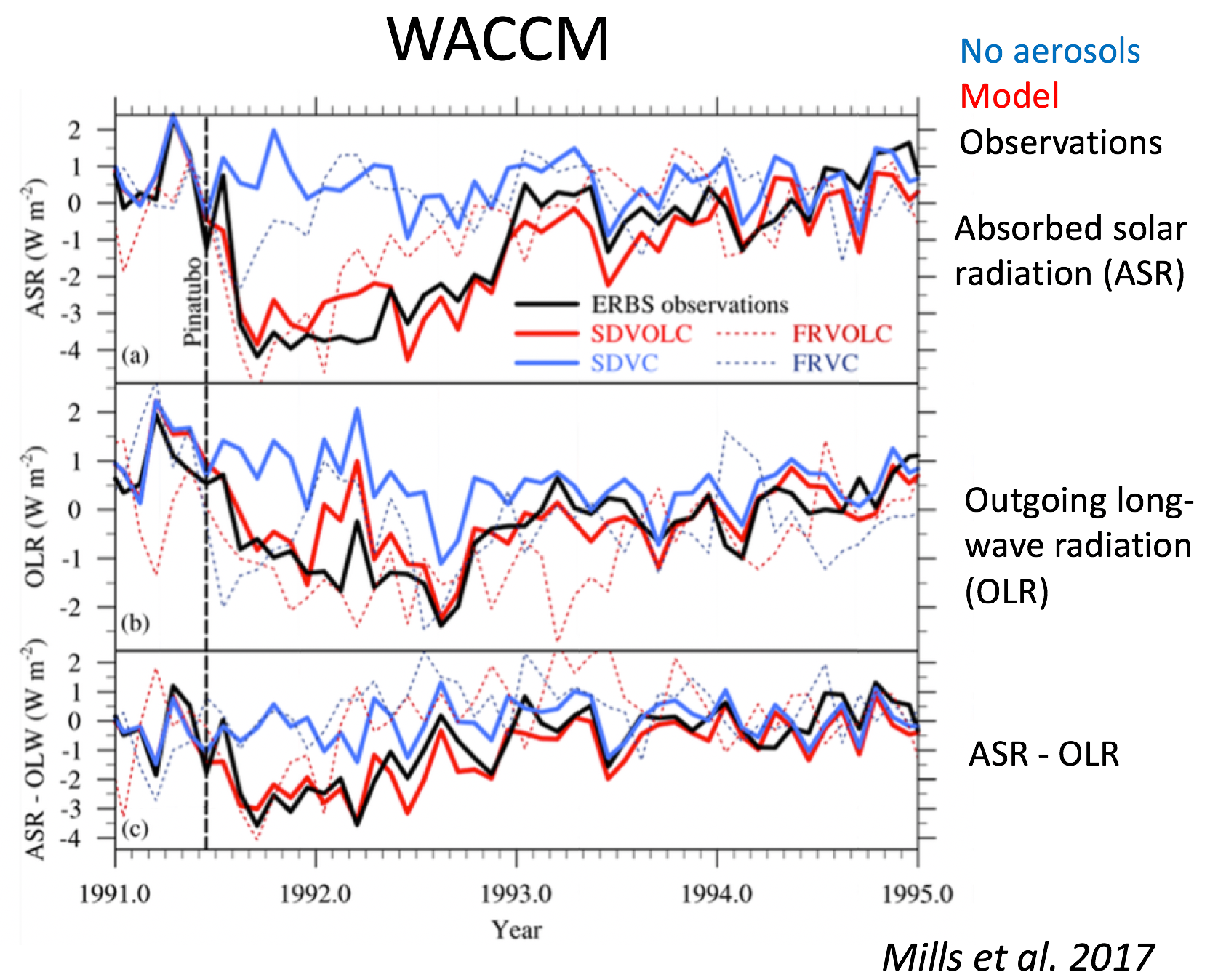Geoengineering
Scientific Lead: Simone Tilmes
Geoengineering global and regional Earth system and weather has become an emerging topic in recent years. Delayed actions to reduce greenhouse gas emissions are projected to have irreversible effects on Earth's system and weather events with dire consequences for society and ecosystems. Geoengineering could be an opportunity to mitigate the worst impacts until emission and greenhouse gas concentration reductions have been effective. In particular, approaches that globally reflect sunlight have a large potential to reduce global temperatures based on recent model studies. At this time, however, it is not known if geoengineering is a viable solution, and a lot of work is needed to understand potential benefits, side effects, and risks of different approaches, in order to appropriately inform society and stakeholders.
The full effect of global geoengineering can only be tested using computer models. Comprehensive Earth System Models are required that represent the most important processes essential to simulate different potential geoengineering proposals. In recent years NCAR's state-of-the-art Whole Atmosphere Community Climate Model (WACCM) has been developed to include interactive coupling between aerosols, chemistry, radiation, and environment. A WACCM model study performed simulations over the period of the recent largest volcanic eruption of Mt. Pinatubo in 1991, and demonstrated excellent agreement with observations in terms of aerosol movement, radiative changes, and chemical response (see Figure). Current and future developments of ACOM models are essential to provide the community with important tools for geoengineering research.

Geoengineering Activities
CESM1(WACCM) Stratospheric Aerosol Geoengineering Large Ensemble (GLENS) Project
Project Team: Simone Tilmes [tilmes@ucar.edu], Jadwiga H. Richter [jrichter@ucar.edu], Michael Mills [mmills@ucar.edu], Ben Kravitz [Ben.Kravitz@pnnl.gov], and Douglas G. MacMartin [macmartin@cornell.edu]
The Stratospheric Aerosol Geoengineering Large Ensemble project produced the first large ensemble geoengineering dataset using the NCAR Community Earth System Model with the Whole Atmosphere Community Climate Model as its atmospheric component (CESM1(WACCM)), http://www.cesm.ucar.edu/experiments/cesm1.2/GLE/. Simulations were performed in 2017 on the new NCAR Cheyenne supercomputer, using the Advanced Science Discovery allocations. A comprehensive set of model output has been made available to the community on the NCAR Climate Data Gateway. This enables the community to explore the effects of solar geoengineering on the Earth system based on a multiple ensemble dataset. So far 3 papers have been published using this dataset and several additional papers are in preparation by colleagues at NCAR, US universities, and international universities, including in the UK and the Netherlands. Researchers are looking at various aspects including detection of Earth system responses, effects on hurricanes, water cycle, aerosols etc. GLENS is a joint project between ACOM and CGD.
DECIMALS
ACOM is participating in the DECIMALS project in collaborating with 8 groups from different developing countries to explore the impacts of Solar Radiation Management (SRM) on their regions. The GLENS data set is used for the DECIMALS activities.
Participation in the Geoengineering Model Intercomparison Project (GeoMIP)
CESM WACCM and CAM-chem have participated in the past GeoMIP model intercomparison project. WACCM6 is also participating in the upcoming CMIP6 GeoMIP activity. The release of new experiments is expected by mid-2019.
Datasets
GeoMIP-G4 specified Stratospheric Aerosol Dataset
Workshops
GeoMIP summer school, Boulder July 2015
Press Releases
- New approach to geoengineering simulations is significant step forward
- The 2-degree goal and the question of geoengineering; How much geoengineering would it take to hit temperature target?
- Geoengineering climate could reduce vital rains
- ACD Featured
- Stratospheric injections to counter global warming could damage ozone layer